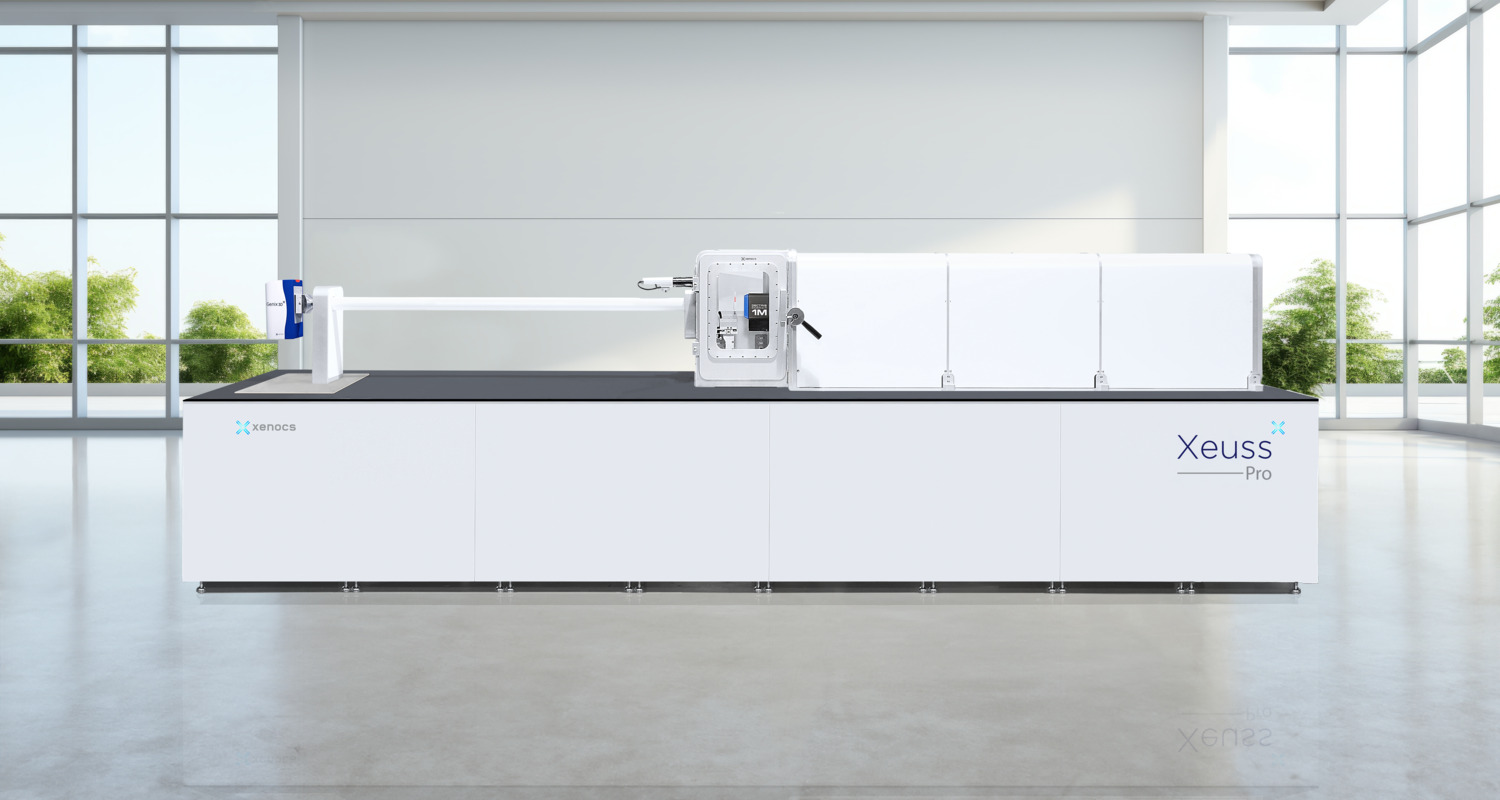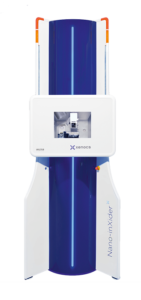Surface to volume ratio
& specific surface area
Specific surface area determination,
what is measured?
The measured quantity is the total area of the interface between the two phases of the sample (often air and sample) for 1 unit of weight or volume. Unit is m²/g or m²/cm3.
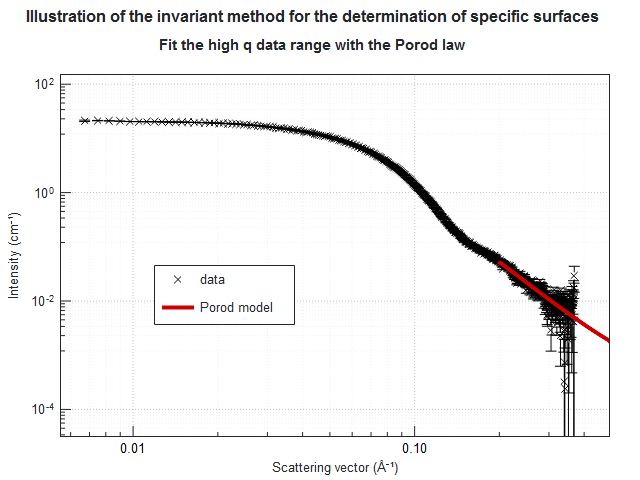
Figure 1. The above example illustrates the estimation of the specific surface of silver nanoparticles in aqueous solution with the invariant method.
The high q data range is analyzed based on the Porod model law, whose slope in loglog scale is proportional to the surface to volume ratio of the particles.
Furthermore, the Porod model is used to extrapolate the data to infinity in order to accurately calculate the total scattering power of the sample, a mandatory ingredient for estimating the specific surface of the silver nanoparticles (94.27 ± 5.23 m²/g in this example).
Samples
Typical samples for this measurement are:
-
Dispersions/solutions
-
Dry powders
-
Porous and granular media
-
Nanostructured solids
Methods & standards
Standards & methods used for characteristic surfaces determination:
-
Absolute intensity scale method
-
Invariant normalization method
-
Global modelling (EM)
Ref: EM framework: F. Benvenuto, H. Haddar and B. Lantz, SIAM J. Appl. Math., 2016, 76(1), 276-292
Learn more :
– O.Spalla, S. Lyonnard and F. Testard in J. Appl. Cryst., 2003, 36, 338-347.
– ISO AWI 20804.
XSACT analysis software implements the above methods.
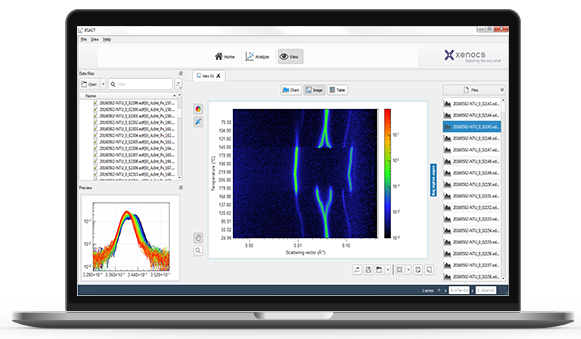
Why use SAXS for specific surface area determination?
Advantages of SAXS for specific surface area determination:
-
SAXS provides access to closed pores.
-
Absolute intensity provides direct quantitative measurement.
-
SAXS works at all temperatures.
-
It is compatible with liquid suspensions.
-
With SAXS, no sample preparation is required.
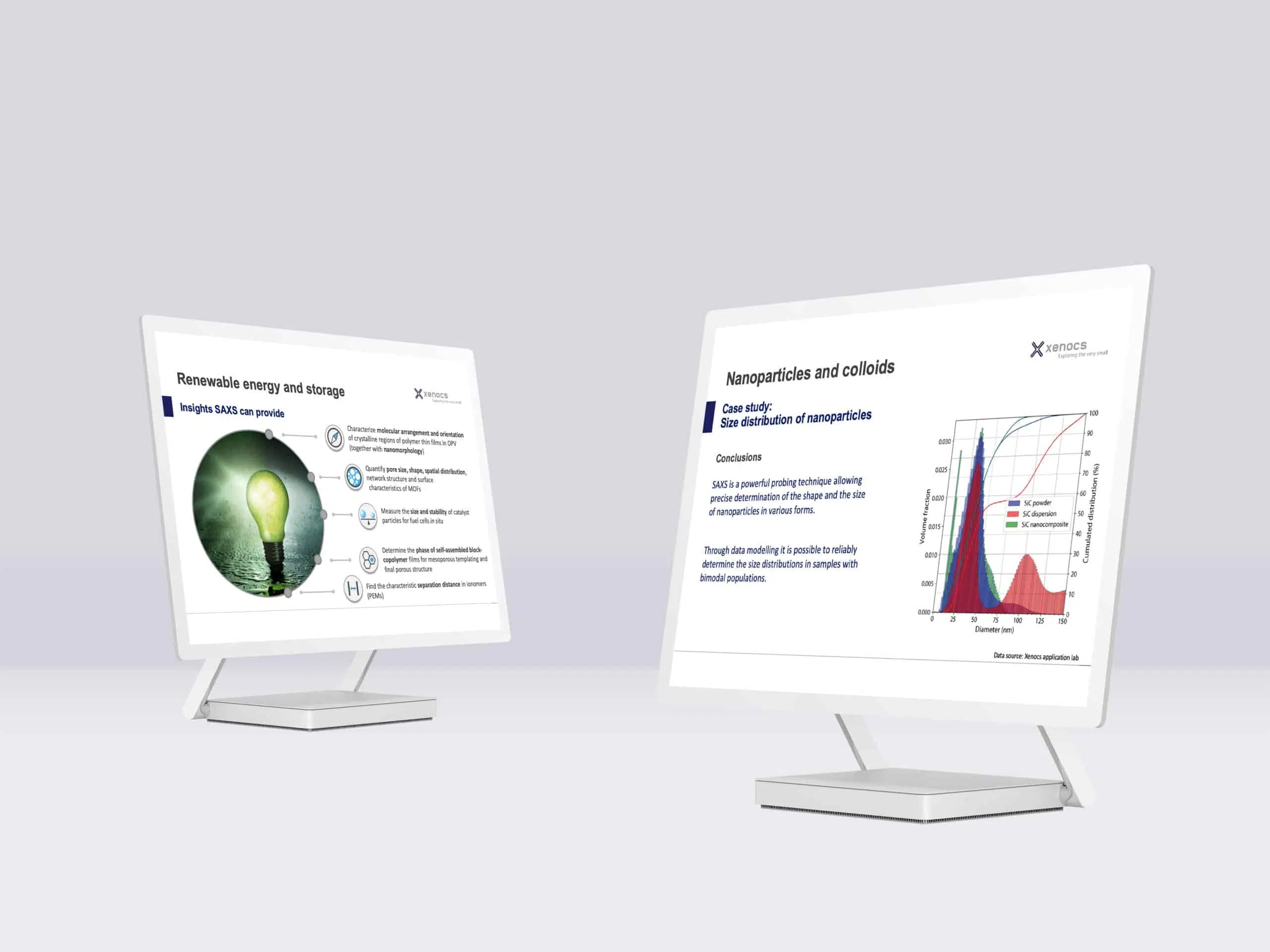
Products
All these measurements are possible directly in your lab.
Xeuss Pro
The Ultimate Solution for Nanoscale Characterization using SAXS/WAXS/GISAXS/USAXS/Imaging
